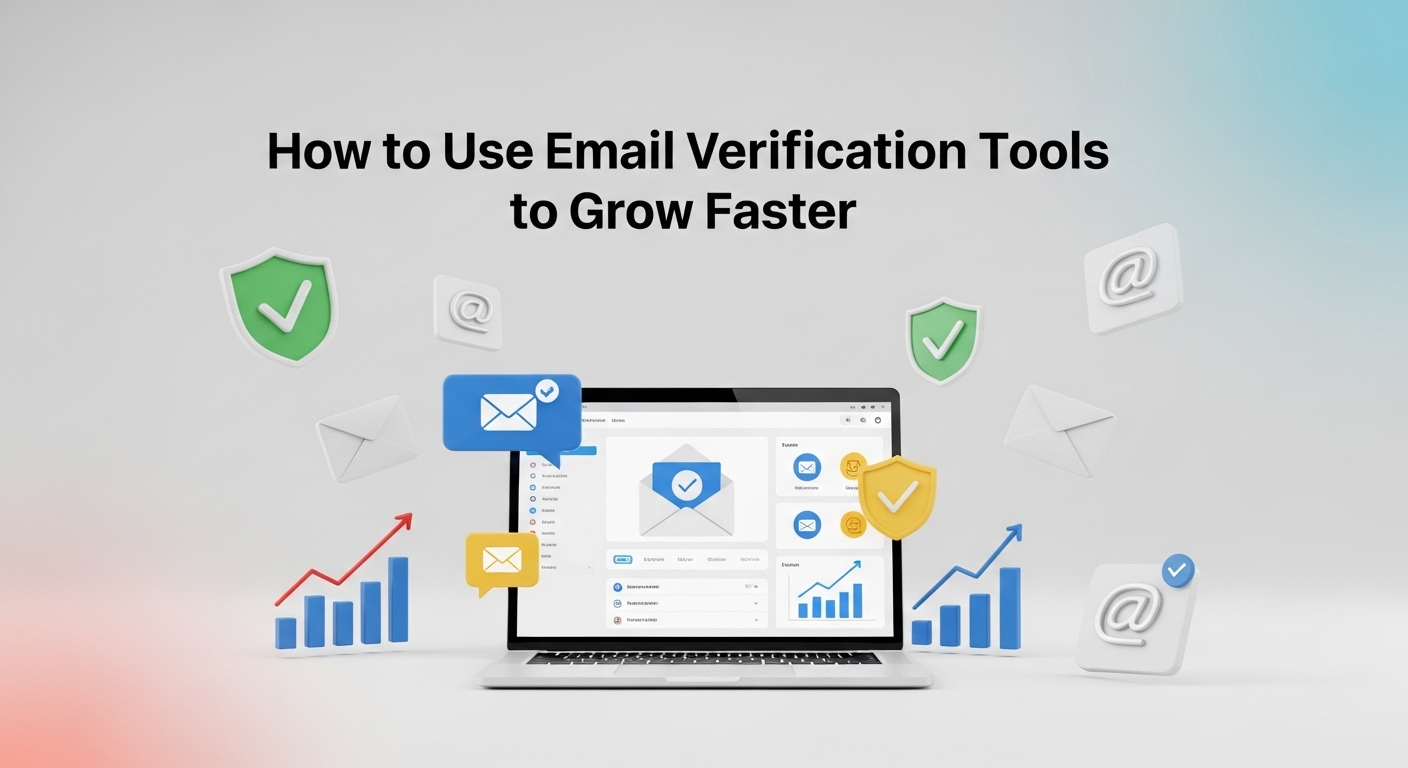How to Use Email Verification Tools to Grow Faster

Strong 8k brings an ultra-HD IPTV experience to your living room and your pocket.
In the fast-paced world of digital marketing and lead generation, every email counts. You spend hours curating the perfect campaign, crafting compelling content, and segmenting your lists — but all your efforts fall flat if your emails land in spam folders or bounce back. That’s where email verifier tools come into play.
In this blog, we’ll explore how using an email verifier can drastically improve your outreach efforts, reduce bounce rates, and help your business grow faster.
What Is an Email Verifier?
An email verifier is a tool that checks the validity and deliverability of an email address. It confirms whether the email ID is active, formatted correctly, and associated with a legitimate domain and mailbox.
It works by:
- Validating syntax
- Checking domain and MX (mail exchange) records
- Detecting disposable or temporary addresses
- Performing mailbox ping (without sending an actual email)
Whether you’re sending cold emails, newsletters, or transactional messages, verifying email addresses helps maintain sender reputation and increase engagement rates.
Why Email Verification Is Crucial for Growth
1. Improves Deliverability
High bounce rates signal email service providers (ESPs) that your list may be outdated or spammy. This can lead to your emails being blocked or blacklisted. Email verifiers clean your list, ensuring more messages reach inboxes, not spam folders.
2. Protects Your Sender Reputation
When your domain is flagged for sending to invalid or fake addresses, your sender score drops. A poor sender score means lower chances of your emails being delivered — even to valid contacts. By using an email verifier, you maintain a strong reputation and stay in the good books of ESPs.
3. Saves Time and Money
Email marketing platforms like Mailchimp or HubSpot charge based on list size. Why pay for inactive or non-existent emails? Cleaning your list with a verifier removes unnecessary contacts, saving you money while improving campaign ROI.
4. Boosts Engagement Metrics
Once you eliminate invalid and unengaged contacts, your open rates, CTRs (click-through rates), and conversions improve. This gives you more accurate insights and makes optimization easier.
5. Reduces Legal Risks
With GDPR, CAN-SPAM, and other data regulations, sending emails to invalid or fraudulent addresses can put your business at legal risk. A verifier helps you comply by ensuring your list contains real, opted-in users.
How to Use Email Verifiers to Accelerate Growth
Step 1: Choose the Right Email Verifier Tool
Not all verifiers are created equal. Look for tools that offer high accuracy, speed, API access, integrations, and real-time verification.
Popular email verifier tools include:
- ZeroBounce
- NeverBounce
- Bouncer
- MillionVerifier
- Hunter.io
- Clearout
- Kickbox
- Emailable
Each of these has its strengths. For example, ZeroBounce is known for its high accuracy, while Hunter offers rich lead enrichment features.
✅ Pro Tip: Test a few tools with a sample list to see which one performs best for your audience and use case.
Step 2: Clean Your Existing Email List
Upload your list and let the verifier scan for:
- Invalid syntax (e.g., missing @ or .com)
- Inactive domains
- Spam traps or honeypots
- Role-based emails (like info@ or support@)
- Temporary/disposable email addresses
Once scanned, you’ll receive categories like:
- Valid
- Invalid
- Catch-all
- Unknown
- Risky
Delete or segment risky addresses to avoid deliverability issues.
Step 3: Set Up Real-Time Verification on Forms
Even if your current list is clean, future signups can pollute it again. Most email verifiers offer APIs or integrations with CRMs, landing pages, and sign-up forms.
With real-time verification:
- You block invalid emails as they’re entered.
- You prevent bots and fake leads from entering your pipeline.
- Your data remains clean and actionable from day one.
Popular integrations:
- WordPress & Elementor
- HubSpot & Salesforce
- Zapier & Make.com
- Mailchimp, ActiveCampaign, ConvertKit
Step 4: Monitor Campaign Metrics Post-Cleanup
After cleaning your list with an email verifier, launch your next campaign and closely track:
- Bounce Rate
- Open Rate
- Spam Complaints
- Unsubscribe Rate
- Click-Through Rate
You’ll likely see a dramatic improvement. This not only proves the effectiveness of email verification but also boosts morale and efficiency across your marketing team.
Step 5: Regularly Verify Your List
Data decays quickly. People change jobs, abandon personal emails, or deactivate accounts.
Make it a habit to:
- Verify your list monthly or quarterly
- Clean inactive subscribers every 90 days
- Remove addresses with repeated hard bounces
If you're running frequent outreach (e.g., sales or influencer campaigns), verify your email list before every major send.
Bonus: Combine Email Verification with Segmentation
Once your list is clean, segment it based on:
- Purchase history
- Demographics
- Engagement levels
- Job roles or industries
Clean + segmented lists outperform dirty + generalized ones. Your messaging becomes more relevant, boosting conversions and loyalty.
Common Mistakes to Avoid
Verifying Once and Forgetting It
Email hygiene is ongoing. Make it part of your marketing workflow.
Using Only Free Verifiers
Many free tools offer low accuracy or limited features. Invest in professional verifiers for better performance.
Not Integrating with Forms
Verifying at the source prevents future problems.
Neglecting Analytics Post-Cleanup
Always measure how verification impacts key KPIs like deliverability and conversions.
Conclusion
In an era where inboxes are crowded and attention spans short, email marketing must be laser-focused and reliable. Using an email verifier is one of the simplest, most effective ways to ensure your messages reach real people — not dead ends.
By keeping your list clean, protecting your sender reputation, and increasing deliverability, you’ll not only grow faster but also grow smarter.
FAQs
Q1: Can email verifiers detect spam traps?
Yes, high-quality email verifiers can identify and flag potential spam traps, reducing the risk of blacklisting.
Q2: How accurate are email verifiers?
Top-tier tools like ZeroBounce and NeverBounce offer 98–99% accuracy rates.
Q3: Is email verification legal?
Yes, verifying email addresses is fully legal and often helps with GDPR and anti-spam compliance.
Q4: Should I delete all catch-all emails?
Not always. Catch-all domains can accept all emails but don’t guarantee inbox delivery. Monitor engagement metrics before deciding.
Note: IndiBlogHub features both user-submitted and editorial content. We do not verify third-party contributions. Read our Disclaimer and Privacy Policyfor details.







